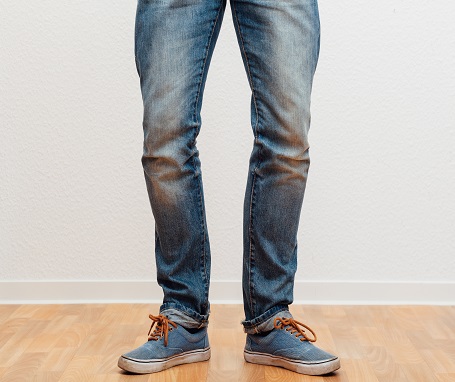Bow Legs
A Latin term used to describe bow legs, Genu varum is a condition which gives the limb an appearance similar to that of an archer’s bow. It is characterized by a deformity wherein the lower leg is arched inward as compared to the thigh’s axis. When a person suffering from bowed legs stands with his/her feet together, they’ll notice the presence of a distinct space between the lower legs and knees. The condition is very common in toddlers and seems to resolve itself as the child ages.
But can the condition persist through adulthood? Well, the answer is- ‘yes’. This can occur due to-
1. Blount’s disease: Blount’s disease is characterized by abnormal growth of the shin bone which eventually causes a sharp curve below the knees. The condition results in bowing of the legs as the person suffering is forced to flex the affected knee while walking.
2. Rickets: Another cause of genu varum in adults is rickets. It is caused due to the deficiency of Vitamin-D. This, in turn, make the bones soft and weak, resulting in rickets. Apart from this, it is also a result of genetic abnormality which doesn’t allow the affected person’s body to absorb vitamin-D efficiently.
3. Paget’s Disease: The disease is characterized by the declining effectiveness of the bones to rebuild themselves. In other words, the bones don’t rebuild as strongly as they should. The disease is quite common in older people.
What are the symptoms of bowlegs?
Bowlegs can be recognized by keeping in mind a number of characteristics that include-
? One of the most common symptoms of bowlegs is an awkward walking pattern.
? Another sign that is most commonly seen in adults with a condition of genu varum is discomfort in knees, hips or ankles.
? Lastly, intoeing or turning in of the feet is a common symptom that is seen in children.
Treatment of bowlegs in Delhi
Surgical treatment of bow legs can be done via-
- Stapling of the physes on one or other side of the knee can be done to restrict growth on that side and allow correction of the deformity (the staples are removed once the knee has over-corrected slightly); there is a risk, however, that normal growth will not resume when the staples are removed.
- Hemi-epiphysiodesis (fusion of one-half of the growth plate) on the 'convex' side of the deformity will achieve similar correction; this requires careful timing, guided by charting the child's bone age and estimating the corrective effect of arresting further growth on one side of the bone.
- Corrective osteotomy (supracondylar osteotomy for valgus knees and high tibial osteotomy for varus knees) may sound sensible; however, the child (and the parents) will have to put up with the 'deformity' until growth is complete before undergoing the operation, otherwise, there is a risk of the deformity recurring while the child is still growing.
There are a number of other ways (non-surgical) through which bowlegs can be treated. This includes the use of-
- Special shoes
- Braces
- casts
At Vardaan Hospital, we provide you with a range of effective treatments that can cure genu varum. The condition as discussed earlier is quite common in children and cures itself with time. However, if it persists through adulthood, the right treatment at the right place is all that you need.

